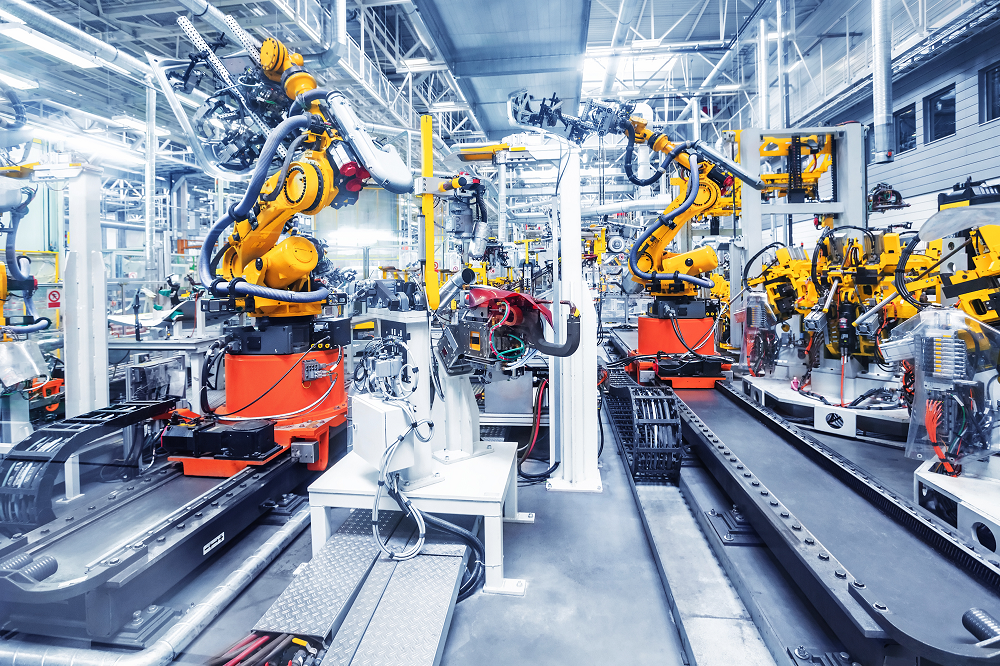When automation technology first entered the market, industry leaders envisioned a future of always-on, 24-hour manufacturing operations powered by robots and AI. Amid inflation, supply chain breakdowns, and labor uncertainty, manufacturers are adopting the technology with a greater sense of urgency than ever. Many companies have also scaled up capacity to include second and third shifts to reshore operations and rebuild inventory lost during the pandemic. But with so few skilled workers available, automation has become increasingly important to keep these new shifts running.
Frost & Sullivan, a market research firm, estimates always-on manufacturing can increase manufacturing output by as much as 30% and cut labor costs by 20% for companies that invest in the technology. Of course, achieving such drastic improvements to KPIs requires overcoming significant implementation hurdles. What do manufacturers need to become 24-hour facilities?
5 Steps to Building an Always-On Manufacturing Operation
Implementing an always-on manufacturing operation requires significant changes to your facilities, technology, and personnel. Here’s what it takes:
1. Optimize Your Factory Layout
Automated shop floors house very different materials and workflows than traditional manufacturing environments. As you implement new equipment and processes, be prepared to make significant changes to your facility’s layout. Benchmark the KPIs of your current layout, such as throughput and cycle time, and look for opportunities to improve them by repositioning machinery and altering walkways. To prioritize safety, many manufacturers isolate heavy-duty robots in restricted areas to minimize contact with workers. Consult with your automation equipment suppliers for insight into best practices when using your new machinery, or even leverage their expertise during site inspections.
2. Invest In Robust ERP and Scheduling Technology
Automation is about more than just robots — it encompasses the way manufacturers manage workflows and communicate as well. AI-powered enterprise resource planning (ERP) platforms eliminate most manual aspects of database management and can help procurement and production teams spot issues that might delay jobs, such as shipping delays or inventory shortages. Leaders can easily pivot operations to maximize uptime and continue generating revenue despite any supply chain challenges. Automated scheduling software can prevent human error with staffing and better utilize labor for each individual shift.
3. Equip Personnel With High-Tech Skills
Beyond simply a lack of workers, the manufacturing labor shortage is also caused by a difficulty finding robotics and automation engineers and tech-savvy talent for today’s increasingly automated workplace. However, leaders are in a good position to upskill their workforce. They can design training programs that exactly match their current and future needs and incentivize employees to participate and expand their skill sets. The new opportunities and career horizons could inspire higher levels of engagement even from longtime employees, further enhancing productivity. And as more digital-native millennials and Generation Z enter the workforce, companies that invest in high-tech training and career development may have an easier time attracting and retaining young applicants.
4. Automate Systems and Coolant Maintenance Processes
To maintain productivity with a limited workforce, automation should extend beyond actual production and streamline mundane processes. That way, employees can devote more time and energy to essential tasks. Cutting fluid management processes could benefit from this type of automation. Many manufacturers install systems to oversee coolant makeup and leverage advanced fluid mixing systems to maintain proper concentration in the sumps.
5. Upgrade to Advanced Cutting Fluid
To further minimize downtime, upgrade to more efficient and robust cutting fluids designed with automation in mind. Here are some fluid characteristics shop managers should prioritize:
- Long sump life
- Tramp oil resistance
- Foam resistance
- Low carryoff
- Tool life extension
- Minimal maintenance
TRIM® fluids like MicroSol™ 692XT and E715 can run unattended for long periods of time, making them especially suited to always-on manufacturing operations. MicroSol 692XT is compatible with a wide array of materials and excels in mixed-metal manufacturing environments with high-pressure and high-volume operations. E715 is a versatile solution for both cutting and grinding operations, and is multi-metal and extremely low foaming.
Transforming your facility into a 24-hour manufacturing operation can require major changes and significant investment. However, you can quickly improve efficiency, labor utilization, and profitability if you implement automation correctly. Pay attention to basics like your cutting fluid to fully maximize your new technology’s ROI.
To learn more about the TRIM cutting fluids best suited for always-on manufacturing, schedule a site visit with our experts or request a free trial of any product in our catalog.

